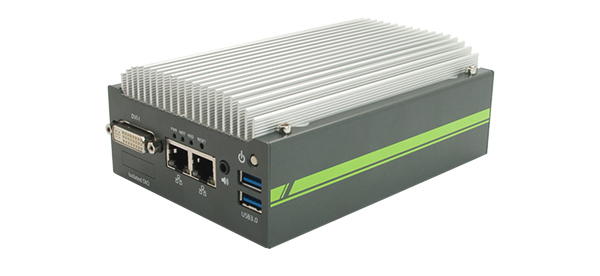
Field level wiring used to be very simple, a sensor was either powered or passive and were all analogue, field controllers had power supplies for every sensor and every sensor had an associated controller. It was only when the idea of networking these devices into a control system network became popular and practical that engineer’s began questioning how else power can be provided over the same set of wires used for the network connection. The idea became much simpler when Ethernet and TCP/IP became the de-facto standard for all networks and so Power over Ethernet (PoE) was born.
So What is Power over Ethernet? (PoE)
PoE permits a standard Ethernet connection to transmit data and power over a single Cat5 cable. It was originally produced by Cisco Systems well before the current IEEE 802.3af-2008 standard was released. The standard covers 2 types of devices, Power Sourcing Equipment (PSE) which are usually Ethernet Switches and adaptors to supply power and connectivity to attached PoE devices. The second type is for Powered Devices (PD), this entails anything from a wireless access point right through to a security camera. There are 2 type of operations specified in the 802.af standard with Type A transmitting power and data over the same data pairs as 10/100Base-T Ethernet whilst Type B utilises unused pairs. The PSE can use either mode but not both simultaneously, whilst the Power Sourcing Equipment (PSE) will also test for standards-compliance before providing power to the Powered Device (PD).
Why Power over Ethernet? (PoE)
Well why not? Providing power and Ethernet data over a single cable results in a dramatic reduction in the amount of wiring required, therefore initial cost and long-term maintenance in manufacturing and industrial environments are minimal costs. Running DC power over long distance is impractical and so too is the re-design required to move power sources closer to the device location. As well as the savings, troubleshooting is of course simplified and it is significantly faster and more convenient to repair connectivity when a cable is broken or otherwise damaged.
Switches and other devices must be ruggedized and designed for the exact environment they are to be placed within. In utilising a PoE splitter device, network designers can connect non-PoE devices by dividing the Ethernet data and power supply with separate outputs.
PoE provides many advantages and is likely to feature ever-more in future technological advancements (as seen above) with tremendous opportunity for expansion. The single CAT5 cable for both power and network, combined with centralized power management and the safe supply of low-voltage DC power making Power over Ethernet a key enabling technology of the future. PoE sensors are beginning to make their way onto the market as well as several Fieldbus networks that are also considering conformance to the 802.af standard to further extend the range of industrial capabilities of future PoE applications.
Power over Ethernet works on two standards; the original IEEE 802.af-2003 providing up to 15.4W of DC power on each port with only 12.95W guaranteed at the PD after dissipation in the cable. The later standard- IEEE 802.3at-2009 also known and represented as PoE+ which delivers 25.5W per port. However, there is soon to be an additional option, the IEEE as a standards body are looking to increase the amount of power transmitted to extend its functionality into new areas with the upcoming IEEE 802.3bt or 4PPoE (4 Pair Power over Ethernet). This will introduce two new levels of power, 55W (Level 3) and 90-100W (Level 4).
We see more and more applications where a single system is required to serve multipurposes including Power over Ethernet (PoE) and below is a selection of what we can offer here at Assured Systems:
NUVO 3616 VR – Rugged Fanless Surveillance System with 16 x PoE+ Ports
The NUVO 3616VR is the world’s first surveillance computer that integrates 16 PoE+ ports, quad-core i7 CPU and RAID all in a compact and fanless chassis. Whether your application be stationary or mobile, the heavy-duty NUVO-3616VR is also capable of video recording and advanced video analytics for surveillance integrations with up to 8TB of on-board storage via 4x 2.5″ SATA HDDs.
NUVO 5100 VTC – In-vehicle Surveillance System with 4 x PoE+ Ports
Alternatively the brand new NUVO 5100VTC is a 6th Gen in-vehicle controller with 4x M12 PoE connectors with on-board CAN bus for in-vehicle communications as well as 802.3af, E-mark and EN50155 certification for a variety of transport installations.

POC-200 – Low Cost Embedded System with 2 x PoE+ Ports
Additionally to the box computers we also stock products such as the POC-200 which is an extremely compact fanless embedded controller, powered by an Intel Atom E3845/E3825 Quad-core processor. The POC-200 Series comprises a complete computer system into the size of a 3.5” hard drive that draws less than 10 watts of power during operation. For more information on the ultra-compact POC-200 embedded controller please see here.


The above products are a small collection of our PoE enabled devices, please follow the above links or click here to see more, we also have Ethernet Switches available but if you’re not too sure or have any questions, please contact us and speak to our technical experts in either the UK 01785 879 050 or USA 864 421 6991.
About Assured Systems
Assured Systems is a leading technology company offering high quality and innovative applied computing solutions to the embedded, industrial, and digital-out-of-home markets across the world. Headquartered in Stone, England and with offices in North America, our reach is truly global. Our impressive product portfolio includes a full range of Fanless Embedded Computer Systems, Digital Signage & Multimedia Computer Systems, Touchscreen Panel PCs, Human Machine Interfaces, Vehicle Mount Computers, Rackmount Computer Systems, Single Board Computers, Rugged Laptops & Tablets.













